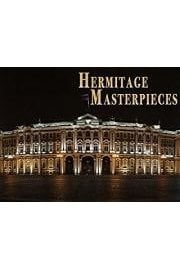
In this episode of Hermitage Masterpieces, we embark on a journey to explore the classical world of Greece and Rome, two of the most fascinating cultures in history. These two cultures left behind a rich artistic legacy that has been cherished and studied for centuries, and we are privileged to get a glimpse of some of their most significant masterpieces.
We begin our exploration in Ancient Greece, where we discover the origin of the concept of the ideal human form. Our first stop is a breathtakingly beautiful sculpture of Apollo, the Greek god of music, poetry, and sun. The statue represents the youthful and perfect male body, in a harmony of posture and movement that was typical of Greek art. The Apollo gives us an idea of the aesthetic and philosophical principles of the ancient Greeks, which placed the human body at the center of their culture and saw it as a reflection of their ideals of harmony, balance, and proportion.
From there, we move on to Rome, where we discover a more pragmatic and practical approach to art. We admire the exquisite mosaics in the Villa of the Mysteries, depicting scenes from Greek mythology in a luxurious setting. The mosaics offer us a glimpse of the opulence and sophistication of Roman society, and the fusion of different artistic styles that characterizes the Roman culture.
But it's the Emperor Augustus that steals the show in Rome, with his larger-than-life statue, a symbol of power and authority. The Augustus statue is a prime example of the Roman art of propaganda, which was used to legitimize the imperial rule and convey the accomplishments of the Emperor.
As we move further into the episode, we explore the influence of both Greek and Roman cultures on the art world, beginning from the Renaissance period. We see how the rediscovery of ancient classical texts and sculptures, which had been buried for centuries, paved the way for a new appreciation of classical art and culture, leading to a rebirth of artistic and scientific exploration in Europe.
We delve into the works of Michelangelo and Raphael, two of the most celebrated Italian artists of the Renaissance period, who were heavily influenced by classical art. We explore how their works captured the essence of classical art, and how they created new forms that blended ancient motifs with contemporary perspective.
Lastly, we get to witness how the Hermitage Museum has preserved and showcased some of the most significant works of classical art in its collections. We see how the Hermitage has managed to bring together works of art from different parts of the world, highlighting the importance of cultural exchange and preservation of art for future generations.
Overall, The Classical World of Greece and Rome is a mesmerizing episode that takes the viewers on a journey through the history of art, uncovering the treasures of classical art and examining their influence on the art world. From the perfect proportions of the Apollo statue to the majestic Emperor Augustus, from the luxurious mosaics of the Villa of the Mysteries to the works of the Renaissance masters, this episode is a feast to the eyes and a celebration of human creativity and imagination.
-
Channel
-
Runtime24 min
-
LanguageEnglish

-
 Free Trial on Freevee
Free Trial on Freevee
-
 Custom Recommendations
Custom Recommendations
-
 Share with Your Family
Share with Your Family

 Free Trial on Freevee
Free Trial on Freevee
 Custom Recommendations
Custom Recommendations
 Share with Your Family
Share with Your Family